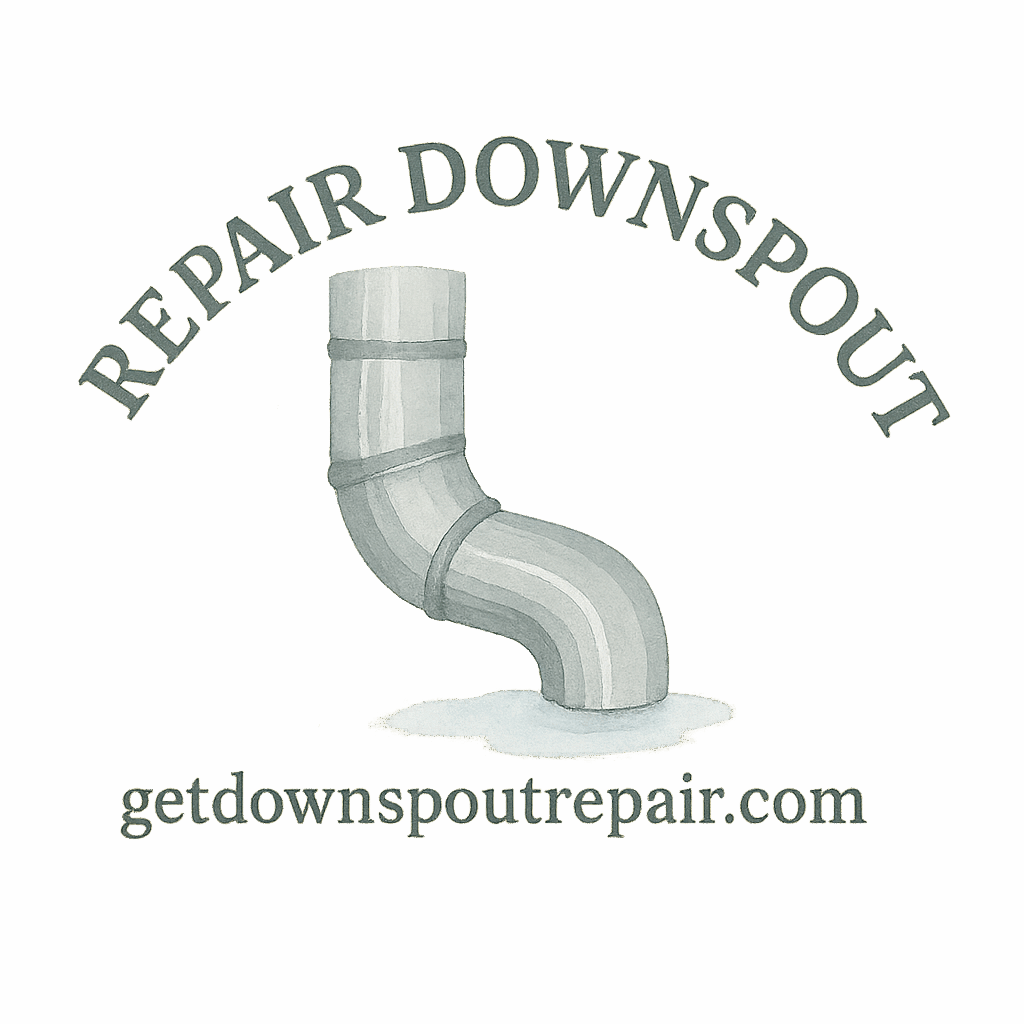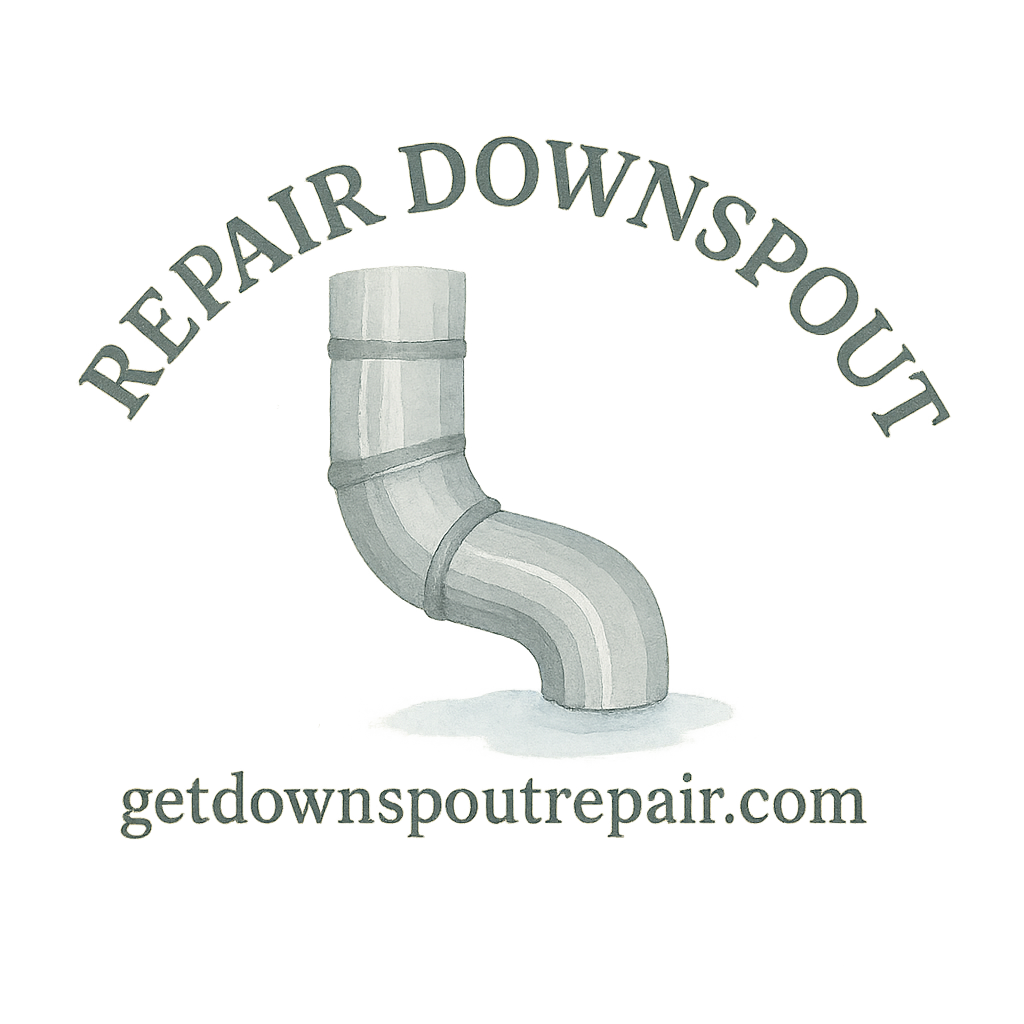Why Spring Is the Perfect Time for Downspout Repair
Spring is like a fresh start for your home. The snow has melted, heavy winter rains are coming, and all that water has one goal: to flow away from your house. If your downspouts aren’t in top shape, that water can creep into your basement, damage your siding, or flood your landscaping. That’s why spring is the ideal time to tackle downspout repair—it’s preventative, affordable, and saves you major headaches later.
Think of it this way: fixing your downspouts now is like giving your house a tune-up before a road trip. You’re making sure everything flows smoothly.
Common Downspout Problems Homeowners Face
Before diving into repair tips, it helps to know what you’re up against. Downspouts may look simple, but they’re prone to a handful of issues.
Clogs and Blockages
Leaves, twigs, and even bird nests can create clogs. When that happens, water backs up, spills over gutters, and soaks into your foundation.
Loose or Detached Sections
Over time, brackets loosen or screws pop out, leaving your downspout sagging or detached. Not only is it ugly, but it also prevents proper drainage.
Rust, Holes, and Leaks
Metal downspouts eventually rust, while plastic ones can crack. Small holes quickly turn into bigger leaks if ignored.
Poor Water Flow and Drainage Issues
Sometimes the problem isn’t the downspout itself but where it’s sending water. If water pools near your foundation, your drainage system needs an upgrade.
For a deeper breakdown of these problems, check out the repair basics guide.
Essential Tools and Materials for DIY Downspout Repair
The good news? You don’t need a garage full of tools to fix your downspouts.
Basic Repair Tools
- Screwdrivers and pliers
- Hacksaw or tin snips (for replacing sections)
- Caulking gun with waterproof sealant
- Tape measure and level
For beginners, this beginner repair toolkit covers the essentials.
Safety Gear You Shouldn’t Skip
Gloves, safety glasses, and a sturdy ladder are must-haves. It’s tempting to skip them, but protecting yourself makes repairs stress-free.
Affordable vs. Premium Repair Materials
Sometimes a budget-friendly sealant does the trick, but for long-term durability, quality products and premium tools are worth the investment.
10 DIY Downspout Repair Tips Every Homeowner Should Try
1. Inspect Your Downspouts Thoroughly
Start with a careful walkthrough. Look for cracks, leaks, loose joints, or pooling water. Take notes—it makes tackling repairs easier.
2. Clear Out Clogs with Simple DIY Tools
A plumber’s snake, garden hose, or even a leaf blower can work wonders. For more tricks, check the DIY fixes guide.
3. Reattach Loose or Sagging Downspouts
Use new screws or brackets to secure them tightly. If brackets are rusty, replace them.
4. Seal Small Leaks and Holes
A bit of waterproof sealant or aluminum patching tape can stop leaks fast. For bigger holes, replacement might be better.

5. Replace Damaged Sections
Cut out broken pieces with tin snips and install new ones. Use couplers for a snug fit.
6. Extend Downspouts Away from the Foundation
Your downspouts should drain water at least 4–6 feet away from the house. Extensions are cheap and effective.
7. Use Splash Blocks or Drainage Extensions
Direct water away with splash blocks or flexible drain pipes. Check out these drainage protection tips.
8. Check and Adjust Downspout Angles
A slightly tilted angle improves flow. Use a level to make sure water runs freely.
9. Add Strainers or Guards to Prevent Future Clogs
Downspout strainers stop leaves and debris before they cause blockages. Learn more in this prevent clogging guide.
10. Perform Seasonal Maintenance Checks
Make inspections part of your spring and fall routines. Preventive care beats emergency repairs every time.
Budget-Friendly Tips for DIY Downspout Repair
You don’t need to spend a fortune to keep your system working. From reusing brackets to patching holes instead of replacing entire sections, small budget tips go a long way.
When to Call a Professional for Help
DIY is great, but sometimes you need expert hands. If your downspouts are severely damaged, if you suspect hidden water damage, or if repairs feel overwhelming, check with a licensed contractor or get pro help here.
How Proper Downspout Care Prevents Costly Damage
Neglected downspouts lead to basement flooding, soil erosion, and siding rot. By following a repair guide, you’re not just saving money—you’re protecting your home’s long-term value.
Final Thoughts on Spring Downspout Repair
Spring is your chance to get ahead of the weather. With these 10 DIY tips, a few affordable tools, and a bit of effort, you can keep your downspouts in peak condition. Remember, small fixes today prevent major expenses tomorrow. So grab your ladder, roll up your sleeves, and let’s keep that water flowing where it belongs—away from your home.
FAQs
1. How often should I inspect my downspouts?
At least twice a year—once in spring and once in fall.
2. Can I repair a rusted downspout, or should I replace it?
Small rust spots can be patched, but widespread rust usually calls for replacement.
3. How far should downspouts extend from my house?
Ideally 4–6 feet, but more if your yard slopes toward your foundation.
4. What’s the fastest way to clear a clogged downspout?
A garden hose with strong pressure or a plumber’s snake works best.
5. Do gutter guards really help with downspout clogs?
Yes, they keep leaves and debris out, reducing maintenance.
6. How much does professional downspout repair cost?
It depends on damage and materials, but here’s a cost breakdown.
7. What’s the biggest risk of ignoring downspout problems?
The most common is water damage, which can cost thousands to fix.


